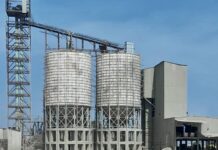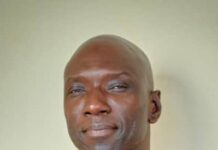By Alfsoninke
I recall I have used the above headline in the past for my opinion pieces, some of which are in the newspaper archives.
President Adama Barrow’s convoy returning from inaugurating the new D100-million Basse market sped past my house around 4pm on Sunday 27 February 2022.
Then it occurred to me to express my thoughts on the manner the presidential convoy speeds on our national highways. It’s about the convoy’s break-neck speeding.
We recall that the dangers and consequences to the public of such behavior was the subject of enquiry by the TRRC.
We learned from the public hearings of the truth commission that, under Yahya Jammeh, many people became victims of human rights violations committed by the president’s convoy.
Indeed, we have witnessed race-track driving on our public highways under the AFPRC junta, and during his latter years when Jammeh became extremely paranoid.
It was apparent that for him driving at high speed was a way to escape any waiting assassin’s bullet or to survive an armed assault.
To be fair to Jammeh, being the retired colonel he was, Jammeh was alive to such an eventuality.
And, in fact, from what we heard, among the options considered by the December 30 attackers (2014) at the State House, was to ambush and attack Jammeh’s convoy as it sped on the highway toward Kanilai.
However, barring the impasse in January 2017, President Barrow who replaced Jammeh had a peaceful and secure first term in office. And, his re-election in 2021 shows he enjoys massive and widespread electoral support.
One would have thought, therefore, that a man in his position would project the image of a man of the people.
Barrow must shun the tendency of his security detail to make him drive past at top speed – and not slow down and cruise – through our crowded settlements.
Otherwise, it reinforces the perception that never mind his recent huge election win, Barrow is not so popular with the public.
This is one assertion his political opponents make, citing the fact that you do not see people come out, line the road, cheer and wave at him, when President Barrow’s convoy is driving past.
Furthermore, we do not expect Barrow’s convoy to be speeding in the way Jammeh’s drivers behaved.
We doubt that there is any threat to warrant his convoy speeding – well over the authorized speed limit – in our densely-populated areas such as between West Field-Tabokoto, for example.
And, we believe such driving shows an enduring mindset evident in the Jammeh-era escort, which used speeding and the din and rumble in our streets as a show of force to instill fear in the population.
Today, we also see the same deployment of heavily-armed soldiers, as we saw whenever Jammeh’s convoys were on the move.
And, then as now, one can’t help wondering if what is going past is the convoy of an elected civilian head of state or the escort of the head of our post-coup military junta on the move!
We recall what happened under Yahya Jammeh, when he regularly sped through the same national highway shuttling between Banjul and Kanilai.
The frustration of commuters and fear in people was obvious, as all traffic was held up/frozen/detoured for hours, as we all suffered quietly.
Now, another issue is the size of Barrow’s convoys, especially the soldiers and other security outfits involved and deployed for his events, and the costs to the public purse whenever he is on the move within the country.
We recall that there was this statement made at the hustings, by a presidential candidate in the December 4, 2022 election, who said that often “Barrow goes to inaugurate projects with 200 vehicles in tow”.
And, since his convoys mostly comprise official vehicles fueled by the state, the politician at the time described such behaviour as very wasteful.
But Barrow is enjoying the trappings of power – staying at the palatial State House surrounded by the presidential guard, going around in like fashion.
There is also the airport red-carpet welcome ceremonies with the honour guards, and the red carpet rolled out at State ceremonies with heavily armed soldiers in attendance, and so on.
We also note the constant presence of men in uniform in our public space, which is one legacy of the Jammeh era, and hope that the ongoing security sector reform will address this phenomenon.
Our point is that, generally, soldiers should mainly stay and be confined to their barracks, and unless necessary should rarely be seen in public places, which is the norm in most modern states.






